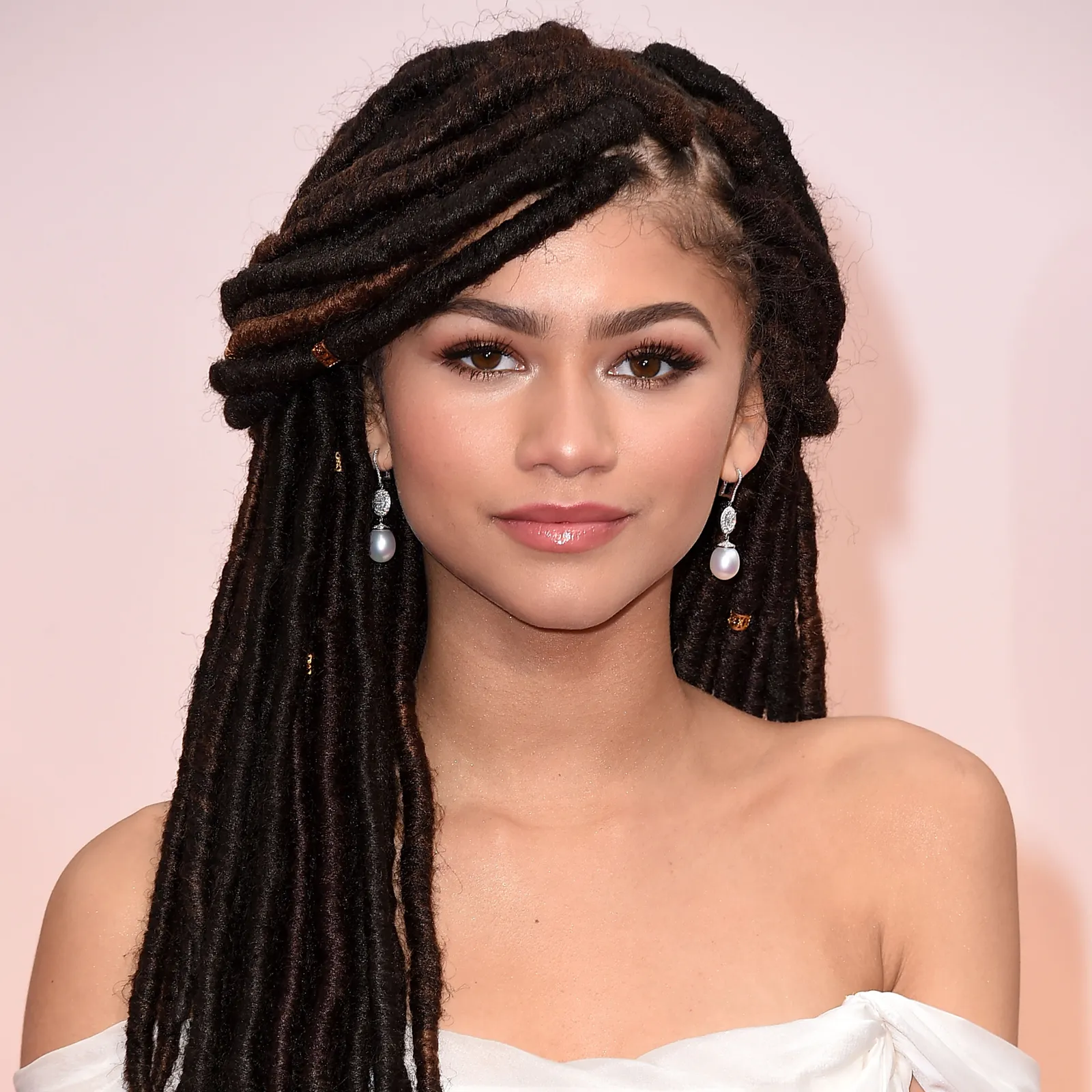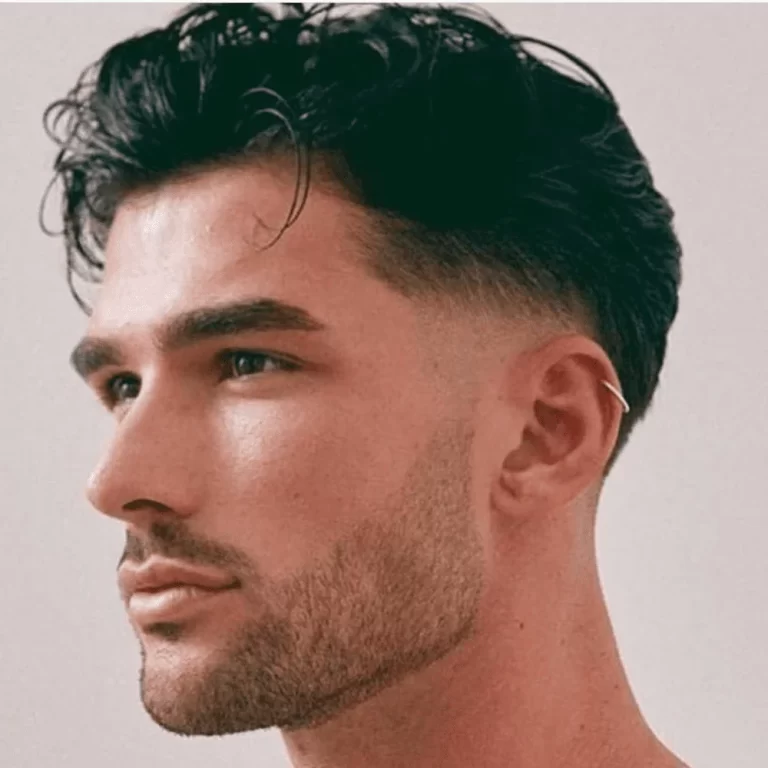
Locks Hairstyle: Embracing Natural Beauty
What Are Locks Hairstyle?
Locks, also known as dreadlocks or locs, represent a hairstyle where hair strands are permanently locked together. This unique style forms rope-like strands of hair that can vary in thickness and length. Locks have a rich cultural history, particularly in African and Caribbean communities. However, they have gained worldwide popularity in recent years. The process of creating locks involves sectioning the hair and allowing it to matt and knot over time.
Alternatively, some methods involve twisting or braiding the hair to encourage locking. Locks can form in various hair types but are most common in tightly coiled or kinky hair textures. This versatile hairstyle offers numerous styling options and can be customized to suit individual preferences. Moreover, locks provide a low-maintenance option for those seeking to embrace their natural hair texture. The journey to fully formed locks can take months or even years, making it a commitment that often holds deep personal or cultural significance for the wearer.

The History and Cultural Significance of Locks
Locks boast a rich history that spans centuries and cultures. Ancient civilizations, including the Egyptians and Greeks, have depicted figures with locked hair in their artwork. In many African cultures, locks hold spiritual significance, often associated with wisdom and strength. Rastafarianism, a religion that emerged in Jamaica in the 1930s, popularized locks as a symbol of spiritual devotion and resistance against oppression.
During the Civil Rights movement in the United States, locks became a powerful symbol of Black pride and identity. In recent decades, locks have gained mainstream acceptance and are now worn by people of various ethnicities and backgrounds. However, this widespread adoption has also sparked discussions about cultural appropriation. Despite controversies, locks continue to hold deep cultural significance for many communities. They often represent a connection to heritage, spirituality, or personal identity. Furthermore, the journey of growing locks can be seen as a form of self-expression and a celebration of natural hair textures. As society becomes more inclusive, the cultural importance of locks continues to evolve and gain recognition.
Types of Locks Hairstyles
Locks offer a wide range of styling options to suit different preferences and hair textures. Traditional locks, also known as freeform locks, develop naturally without manipulation. These locks tend to vary in size and shape, creating a unique, organic look. Alternatively, cultivated locks involve more deliberate styling and maintenance. Sisterlocks, a trademarked technique, creates very thin, uniform locks that offer versatility in styling. Microlocks, similar to Sisterlocks but not trademarked, also provide a neat, polished appearance.
Interlocking, a method of maintaining locks, involves pulling the loose hair at the roots through the base of the lock. This technique works well for those with straighter hair textures. Two-strand twists can be used to start locks or as a temporary style, eventually locking over time. Braided locks begin as individual braids that eventually lock together. Concern locks, popularized by the artist The Weeknd, involve combining multiple locks to create thicker strands. Each type of lock hairstyle offers its own unique aesthetic and maintenance requirements. The choice often depends on personal preference, hair texture, and desired final look.

Starting Your Locks Journey
Embarking on a locks journey requires careful consideration and preparation. First, decide on the type of locks desired and research the best method for your hair texture. Consulting with a professional loctician can provide valuable insights and ensure a strong foundation for your locks. Before starting, ensure your hair is in good condition. Trim any damaged ends and focus on scalp health. The initial locking process varies depending on the chosen method. For traditional locks, the hair is typically sectioned and either twisted or backcombed to encourage matting.
Sisterlocks and microlocks require a specific technique performed by a certified professional. Two-strand twist or braid methods involve creating the chosen style throughout the hair and allowing it to lock over time. Patience is crucial during the early stages of lock formation. The hair may appear frizzy or messy as it begins to lock. Avoid the temptation to constantly manipulate or restyle the hair during this period. Proper care during the early stages sets the foundation for healthy, well-formed locks. This includes regular washing, moisturizing, and protecting the hair while sleeping. Remember, the journey to fully formed locks can take months or even years, so embrace each stage of the process.
Maintaining Healthy Locks
Proper maintenance is crucial for keeping locks healthy and attractive. Regular washing is essential to prevent buildup of dirt, oil, and debris. Use a residue-free shampoo and focus on cleansing the scalp thoroughly. Diluting the shampoo with water can help it penetrate the locks more effectively. After washing, ensure the locks are completely dry to prevent mold growth. This may involve using a hooded dryer or allowing ample time for air drying. Moisturizing is key to preventing dry, brittle locks. Use lightweight oils or specially formulated loc moisturizers, applying them primarily to the length of the locks rather than the roots.
Retwisting or interlocking the new growth at the roots helps maintain a neat appearance. However, avoid over-manipulation, which can cause thinning or breakage. Protect locks while sleeping by using a satin or silk bonnet or pillowcase. This reduces friction and helps retain moisture. Regular scalp massages can stimulate blood flow and promote healthy hair growth. Avoid using products that can cause buildup, such as heavy waxes or non-water-soluble styling products. With proper care, locks can remain healthy and beautiful for many years.

Styling Options for Locks Hairstyle
Locks offer numerous styling possibilities, allowing for creative expression and versatility. Updos provide elegant options for formal occasions or professional settings. Try a high bun, a crown braid, or a sleek ponytail. For a more relaxed look, half-up styles keep locks out of the face while showcasing their length. Accessorizing locks can add a personal touch. Incorporate beads, cuffs, or colorful thread wraps for a unique flair. Headbands, scarves, or decorative pins can also enhance lock styles. For special events, consider having a loctician create intricate styles like loc petals or pinwheel designs.
These temporary styles showcase the flexibility of locks. Color is another way to customize locks. Highlights, ombre effects, or all-over color can dramatically change your look. However, consult a professional to ensure the coloring process doesn’t damage the locks. For those seeking a change without permanence, try loc extensions. These can add length or volume temporarily. Experiment with different partings to create new looks. A deep side part or zigzag parting can refresh your style without major changes. Remember, while styling, be gentle to avoid putting too much stress on the locks or scalp.
Common Challenges and Solutions
While locks offer many benefits, they can present certain challenges. One common issue is dryness, which can lead to brittleness and breakage. Combat this by maintaining a regular moisturizing routine and using leave-in conditioners designed for locks. Buildup, another frequent problem, occurs when products, dirt, or oils accumulate on the locks. Prevent this by using residue-free products and clarifying shampoos periodically. Some people experience scalp itching, especially in the early stages of locking. Address this with tea tree oil or other soothing scalp treatments.
Thinning locks can occur due to over-manipulation or tension. Avoid this by being gentle during styling and maintenance, and consider taking breaks from tight styles. Unraveling, particularly at the ends, may happen in new locks. Combat this by gently palm-rolling the ends or using loc gel sparingly. Color damage is a risk for those who dye their locks. Mitigate this by using color-safe products and deep conditioning treatments. Mold growth, while rare, can occur if locks are not dried properly. Ensure thorough drying after washing and consider using a hooded dryer if needed. With patience and proper care, most lock challenges can be overcome, leading to healthy, beautiful locks.

Locks in Professional Settings
As workplace diversity increases, locks are becoming more accepted in professional environments. However, some individuals still face discrimination or bias due to their hairstyle. Education and advocacy play crucial roles in promoting acceptance of natural hair in all settings. When wearing locks in a professional environment, neat and well-maintained styles often receive the best reception. Consider updos or pulled-back styles for a polished look. Some professions may require locks to be covered for safety or hygiene reasons. In these cases, explore professional-looking options like buns or braided styles that fit easily under required headgear.
It’s important to know your rights regarding hairstyle discrimination in the workplace. Many jurisdictions have passed laws protecting against hair-based discrimination, recognizing it as a form of racial discrimination. If faced with unfair treatment due to your locks, consider seeking advice from HR or legal professionals. Remember, locks can be styled in numerous professional-looking ways. Confidence in your appearance can positively impact your professional presence. By maintaining well-groomed locks and adapting styles to fit workplace norms when necessary, individuals with locks can succeed in any professional setting.
Celebrity Inspiration for Locks HairStyle
Numerous celebrities have embraced locks, showcasing the versatility and beauty of this hairstyle. Bob Marley, arguably the most famous figure associated with locks, helped popularize the style globally. His free-flowing locks became an iconic part of his image. Whoopi Goldberg has sported her signature locks for decades, demonstrating their timeless appeal. Jason Momoa’s rugged locks have become a part of his heartthrob status, proving locks can be masculine and sexy. Zendaya temporarily wore faux locks, bringing attention to the style’s versatility and sparking important conversations about cultural appropriation.
Chloe x Halle, the R&B duo, showcase how locks can be styled in various ways, from updos to colorful accessories. Musician Lenny Kravitz’s long, free-flowing locks have been a part of his rock star image for years. Author Toni Morrison’s elegant gray locks demonstrated how the style can be gracefully maintained throughout one’s life. These celebrities and many others have helped to normalize and celebrate locks in mainstream media. Their influence has inspired many to embrace their natural hair texture and consider locks as a stylish, meaningful hairstyle choice. By confidently wearing locks in various settings and styles, these public figures continue to challenge stereotypes and promote acceptance of diverse hair textures and styles.
The Future of Locks Hairstyles
The future of locks hairstyle looks bright, with increasing acceptance and innovation in styling techniques. As society continues to embrace natural hair textures, locks are likely to gain even more popularity. Technological advancements may introduce new tools and products specifically designed for lock maintenance and styling. Virtual reality could potentially allow individuals to visualize how different lock styles would look on them before committing to the style. The beauty industry is also likely to develop more specialized products for locked hair, including color treatments, moisturizers, and styling aids.
As environmental concerns grow, eco-friendly lock care products may become more prevalent. The fashion industry’s increasing inclusivity could lead to more representation of locks in high-fashion contexts, further normalizing the style. Education about locks and their cultural significance may become more widespread, promoting understanding and reducing discrimination. New variations of lock styles may emerge, combining traditional techniques with modern aesthetics. The intersection of locks with other aspects of identity, such as gender expression or spirituality, may lead to new cultural interpretations of the style. As locks continue to evolve, they will likely remain a powerful form of self-expression and cultural pride for many individuals around the world.

